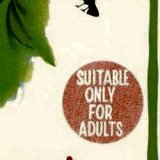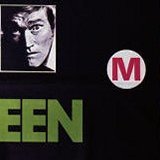Censorship
in Australia
The censorship structure that Australia operates under
is quite unique, as opposed to other countries with individual territory
controls like Canada.
Under the Constitution, the Commonwealth Government has
the power to make laws with regard to telecommunications (including broadcasting)
and imported material, but not locally produced material. Locally produced
material is under the jurisdiction of the individual State governments.
Because of this, censorship provisions vary greatly between
each state or territory. A Commonwealth Film Censorship Board was first
established under the provisions of the Customs Act in 1917.
In 1948, the censors banned - as a general rule - nearly
all horror films. This was also a retrospective ban which meant that the
vast majority of 30s and 40s horror films including the Universal classics
and films like KING KONG were banned and not allowed to be shown.
In 1949, Western Australia, Queensland and Tasmania signed
agreements with the Commonwealth to delegate their film censorship powers
and functions to the Commonwealth. The other States followed suit later.
In the early 1960s, censorship eased which allowed early
horror rereleases which had been released before the censorship ban to be
shown, and major horror films that had been excluded shown for the first
time. The problem was that they were heavily cut and edited so they could
get either a For General Exhibition or Not Suitable for Children rating.
All violent scenes were deleted which was a major difference for the film.
Since 1970, when the censorship moved to more of a board
control instead of individual preferences of the censors, there has been
more relaxing of the censorship, BUT Australia still has a very stiff censorship
policy which has heavily affected the film releases.
What should poster collectors look for?
In 1970, the Commonwealth Film Censorship Board changed
the way the ratings were displayed. They changed from words to letters.
This is a major indicator when it comes to dating reissues.
 |
 |
| old system |
new system |
Since early horror and violent films were normally banned, quite often
those titles will be rereleases. Another alternative is that it might be
a New Zealand poster instead of Australian. Numerous films were able to
be released in New Zealand when they had been banned in Australia.
Standard movie and video ratings for Australia
*G - Suitable for all viewers. A "G" movie rating in Australia
doesn't indicate the movie is intended for children, simply that nothing
in the movie will be disturbing or harmful to children
.
*PG - Parental Guidance recommended for children under 15 years of age.
*M - Mature, recommended for audiences 15 years and over. This is not
a legally restricted Australian movie rating, but movies in this category
cannot be recommended for those under 15 years.
*MA - Mature Accompanied. This category is legally restricted in that
children under 15 cannot see "MA" films or rent them on video
unless accompanied by a parent or adult guardian.
*R - Restricted. This category is legally restricted to adults. No one
under 18 may view these movies in a cinema or rent them on videocassette.
*X - Restricted. This rating applies to sexually explicit material which
is restricted to viewers 18 years of age and over. Although there is no
federal restriction on X rated material, it is officially illegal all
states - meaning it is legally only available in the Australian Capital
Territory. In practice, however, most authorities turn a blind eye within
the states.
Video Ratings
In July 1983 a meeting of Commonwealth and State Ministers was convened
to pursue proposals for a uniform classification scheme for publications
and videotapes. The Ministers agreed on a voluntary scheme for the classification
of videotapes, with the classification being the responsibility of the Film
Censorship Board. Each State and territory would introduce legislation based
on a model ACT Ordinance.
Five classification categories would be provided for:
G (General),
PG (Parental Guidance),
M (Mature),
R (Restricted)
X.
Additional
information provided by Phil Edwards Cinema Arts Pty Ltd
Australian Censorship Timeline
1906 - 'art versus obscenity' case in New Zealand
1907 - Victorian Chief Secretary bans screenings of The Kelly Gang in Benalla
and Wangarratta
1908 - NSW Theatres & Public Halls Act
1911 - Exhibition of The Kelly Gang film banned in Adelaide
1916 - New Zealand Cinematograph-film Censorship Act 1916
1916 - Establishment of office of the Chief Film Censor in New Zealand
1917 - Commonwealth Censorship Board established to regulate import of film
1919 - James Joyce's Ulysses banned by Commonwealth
1919 - Customs (Cinematograph) Regulations 1919 establish office of Commonwealth
Chief Film Censor
1926 - Jean Devanny's The Butchers Shop banned in New Zealand
1927 - Royal Commission on the Moving Picture Industry in Australia
1928 - New Commonwealth Film Censorship Board and Appeal Board established
1928 - Commonwealth Customs (Cinematograph Films) Regulations 1928
1929 - Customs bans import of Joyce's Ulysses
1930 - Norman Lindsay's Redheap banned by Commonwealth but available in
NZ, UK, Canada and US
1930 - Film of Remarque's All Quiet On The Western Front temporarily banned
in New Zealand
1936 - Odets's anti-Nazi Till the Day I Die banned in NSW, under Theatres
& Public Halls Act 1908
1937 - Joyce's Ulysses unbanned by Commonwealth
1939 - Boccaccio's Decameron found to be decent after legal appeal in New
Zealand
1939 - Commonwealth Department of Information established
1941 - Joyce's Ulysses re-banned by Commonwealth
1945 - Forever Amber banned in New Zealand
1946 - Robert Close's Love Me, Sailor banned by Commonwealth and Victoria
1946 - Glassop's We Are The Rats banned by Commonwealth
1946 - Christina Stead's Letty Fox, Her Luck banned by Commonwealth
1947 - Western Australia Censorship of Films Act 1947
1947 - Queensland Picture Theatre & Film Act 1947
1948 - Christina Stead's A Little Tea, a Little Chat banned by Commonwealth
1949 - Western Australia, Queensland and Tasmania sign agreement delegating
film censorship functions to Commonwealth
1949 - Tasmanian Censorship of Films Act 1949
1954 - The Wild One banned in New Zealand
1955 - Rebel Without A Cause allowed into New Zealand on appeal
1956 - New Commonwealth Film Censorship Board established under the Customs
(Cinematograph Films) Regulations
1968 - America Hurrah! banned in NSW under Theatres & Public Halls Act
1908
1971 - ACT Film Classification Act 1971
1971 - South Australia Classification of Films for Public Exhibition Act
1971
1984 - NSW Film & Video Tape Classification Act 1984
1984 - Victorian Films Act introduces X-rating
1984 - Western Australia Censorship of Films Amendment Act 1984
1985 - Northern Territory Classification of Publications & Films Act
1985
1987 - New Zealand Video Recordings Authority established under Video Recordings
Act
1987 - Western Australia Video Tapes Classification & Control Act 1987
1988 - Report of Federal Parliament Joint Select Committee on Video Material
1988 - Commonwealth Office of Film & Literature Classification established
1990 - Victorian Classification of Films & Publications Act 1990
1991 - Queensland Classification of Films Act 1991 and Classification of
Publications Act 1991
1991 - Australian Law Reform Commission Censorship Procedure report
1993 - Mature Adult (MA) film classification in Australia
1993 - New Zealand Films, Videos & Publications Classification Act 1993
1994 - New Zealand Office of Film & Literature Classification established
1995 - Victorian Classification (Publications, Films & Computer Games)
Enforcement Act 1995
1995 - ACT Classification (Publications, Films & Computer Games) Act
1995
1995 - Queensland Classification of Computer Games & Images Act 1995
1995 - South Australian Classification (Publications, Films & Computer
Games) Act 1995
1995 - Tasmanian Classification (Publications, Films & Computer Games)
Enforcement Act 1995
1996 - Western Australian Censorship Act 1996
1996 - South Australian Racial Vilification Act 1996
1996 - Northern Territory Classification of Publications, Films & Computer
Games Act 1996
2003 - Ken Park film banned in NSW

